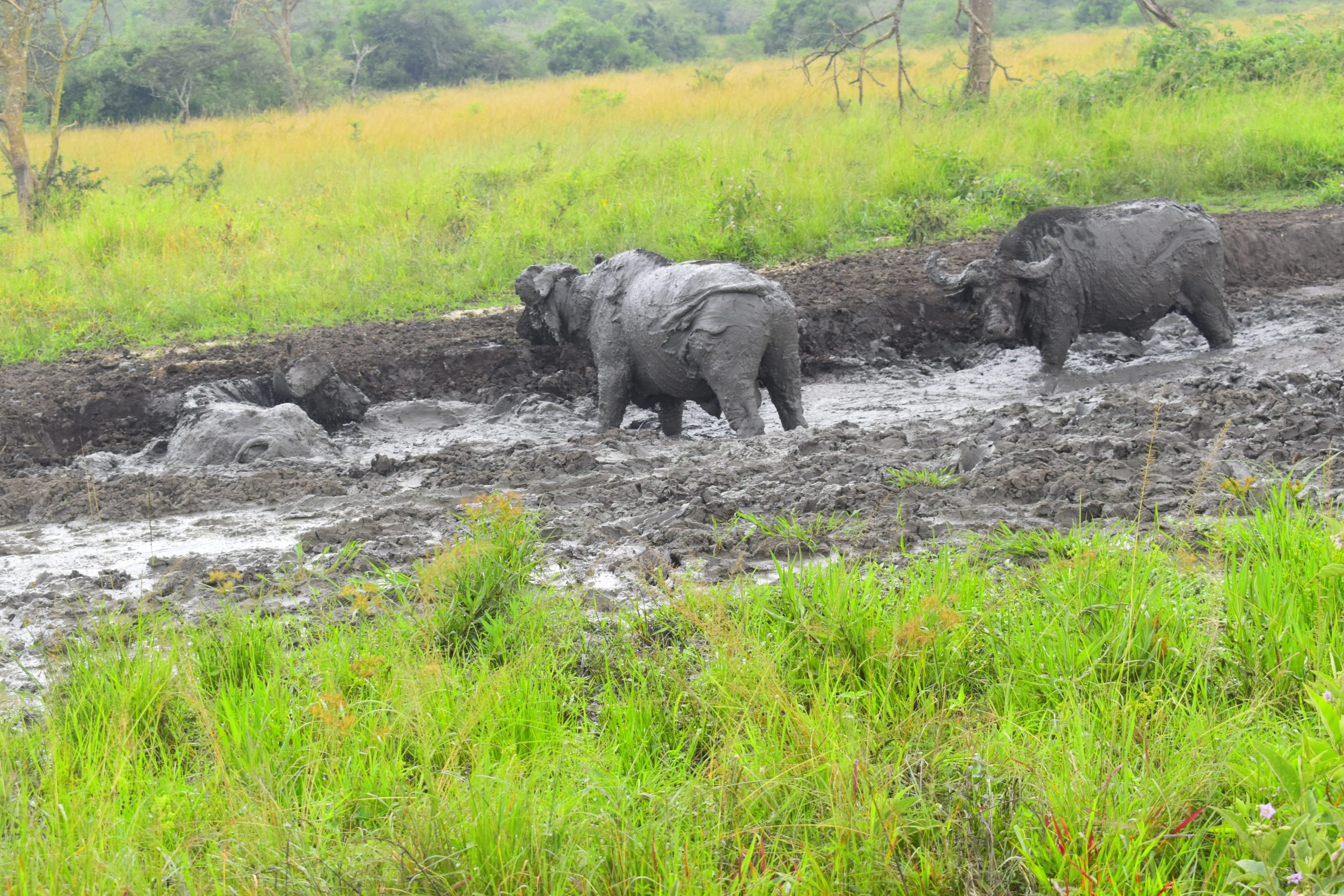LAKE MBURO NATIONAL PARK ACTIVITIES AND LOCATION
Lake Mburo National Park is sandwiched in the Kiruhura district, conveniently close to the highway connecting Kampala to Western Uganda’s parks. This is Uganda’s smallest savannah park, but it is the most vibrant and diverse. This compact gem is underlain by ancient Precambrian metamorphic rocks that date more than 500 million years ago. The park was gazetted in 1933 as a controlled hunting area, but later, around 1963, Lake Mburo was upgraded to a game reserve.

Lake Mburo National Park, buffalos cooling off their heat
Banyankole and Bahima pastoralists first occupied the site, and the narrative of how the park came to exist is fascinating. Along with various games, Lake Mburo is home to 350 bird species. The park comprises 13 lakes. Lake Mburo is part of the 50-kilometer-long wetland system, and 5 lakes are within the park’s border.
This gifted park is covered by an open savannah, which supports the life of the animal population in the park. These animals include bush pigs, warthogs, hippopotamus, topi, reedbucks, oribi, zebras, elands, waterbucks and impalas. The park now contains woodland because no elephants disturb the vegetation. Savannah is interspersed with rocky ridges and forested gorges with patches of papyrus swamp and narrow bands. This park is extraordinary, with every part of it being alive with various sculpted landscapes of rolling hills and idyllic lake shores with a varied mosaic of habitats: seasonal and permanent swamps, forest galleries, rich acacia woodlands and grassy valleys that support the wildlife.
Lake Mburo is unique because it is the only park with eland, impala and klipspringer and is home to a large population of zebras in Uganda, which is about 5,000, not only with the highest concentration of leopards.
A tourist can spot many different animals, including white-tailed mongoose, warthogs, topi, bush pigs, reedbucks and oribis; rare sitatungas can be spotted in the open valleys. The night drives are also done around the park, as is sport hunting. There are a variety of activities to be enjoyed around the park.
The park receives 800mm of rain a year because it lies near the equator, with long rains from March to June and short rains from September to December. The best time to visit the park is in March and September when the temperature ranges from 14°C to 32°C. July and August are the hottest months, but January and December can be hot.
Lake Mburo National Park is just 235km from Kampala, which is just a 4 hour and 35 minute drive via Masaka and Mbarara Masaka roads. The park can be accessed from the three entrance gates: Kanyashara gate, Sanga gate and finally, near the gate. There are many lodging options around and within the park to accommodate travellers.
Lake Mburo National Park Map

